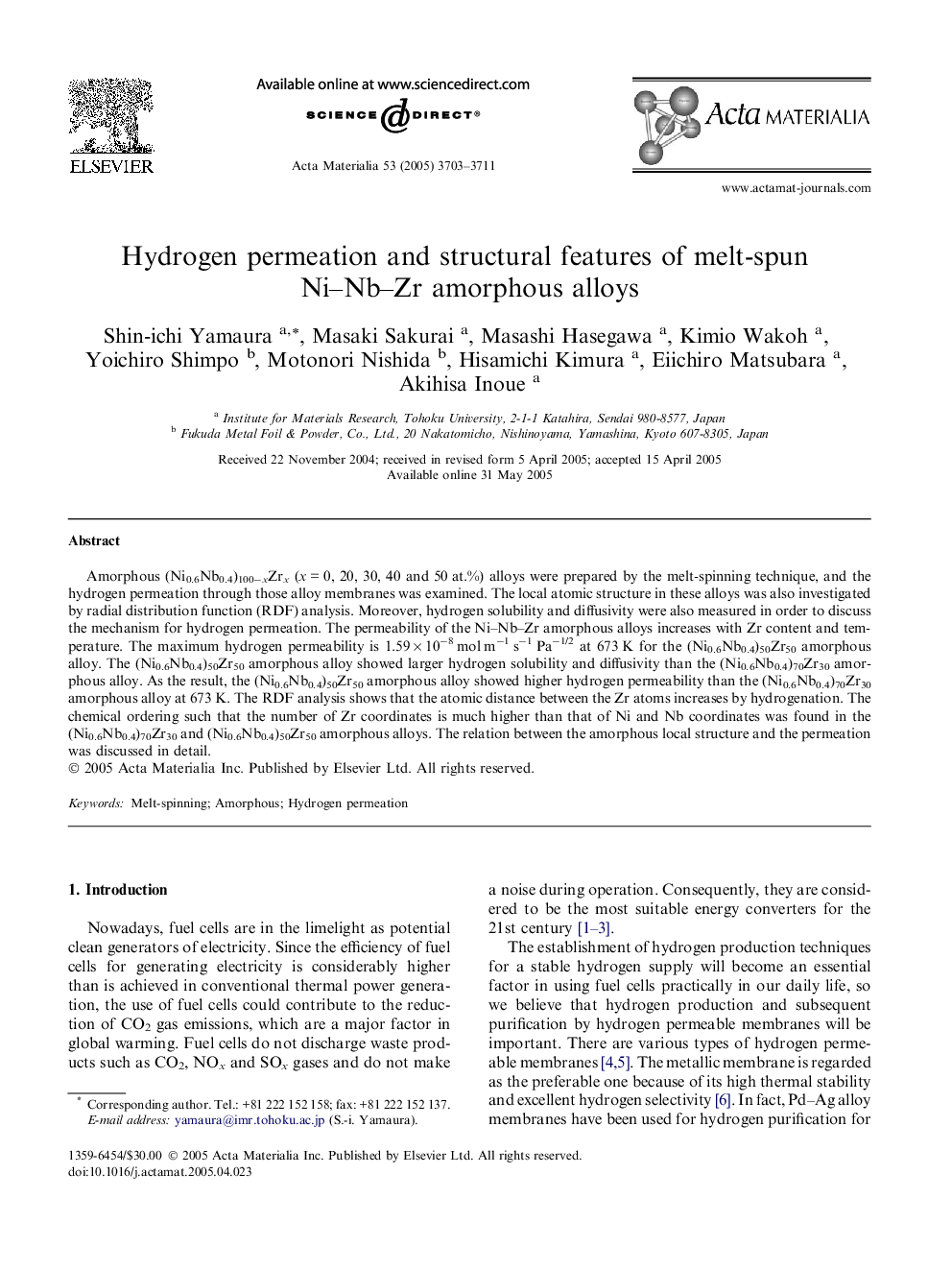| Article ID | Journal | Published Year | Pages | File Type |
|---|---|---|---|---|
| 1451401 | Acta Materialia | 2005 | 9 Pages |
Amorphous (Ni0.6Nb0.4)100−xZrx (x = 0, 20, 30, 40 and 50 at.%) alloys were prepared by the melt-spinning technique, and the hydrogen permeation through those alloy membranes was examined. The local atomic structure in these alloys was also investigated by radial distribution function (RDF) analysis. Moreover, hydrogen solubility and diffusivity were also measured in order to discuss the mechanism for hydrogen permeation. The permeability of the Ni–Nb–Zr amorphous alloys increases with Zr content and temperature. The maximum hydrogen permeability is 1.59 × 10−8 mol m−1 s−1 Pa−1/2 at 673 K for the (Ni0.6Nb0.4)50Zr50 amorphous alloy. The (Ni0.6Nb0.4)50Zr50 amorphous alloy showed larger hydrogen solubility and diffusivity than the (Ni0.6Nb0.4)70Zr30 amorphous alloy. As the result, the (Ni0.6Nb0.4)50Zr50 amorphous alloy showed higher hydrogen permeability than the (Ni0.6Nb0.4)70Zr30 amorphous alloy at 673 K. The RDF analysis shows that the atomic distance between the Zr atoms increases by hydrogenation. The chemical ordering such that the number of Zr coordinates is much higher than that of Ni and Nb coordinates was found in the (Ni0.6Nb0.4)70Zr30 and (Ni0.6Nb0.4)50Zr50 amorphous alloys. The relation between the amorphous local structure and the permeation was discussed in detail.
